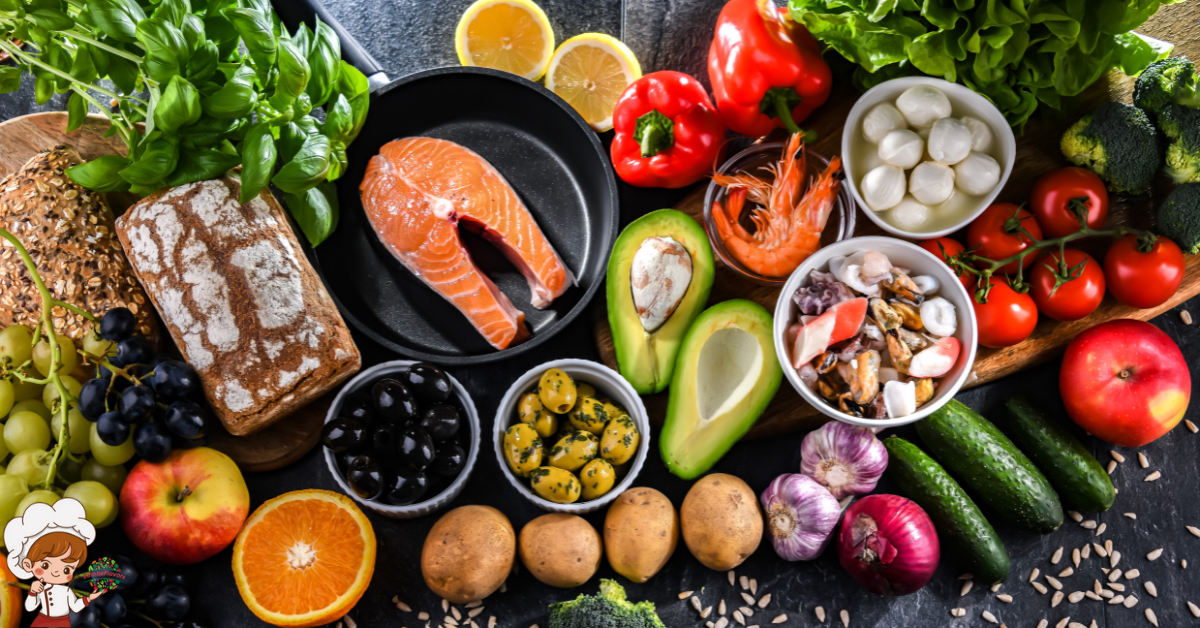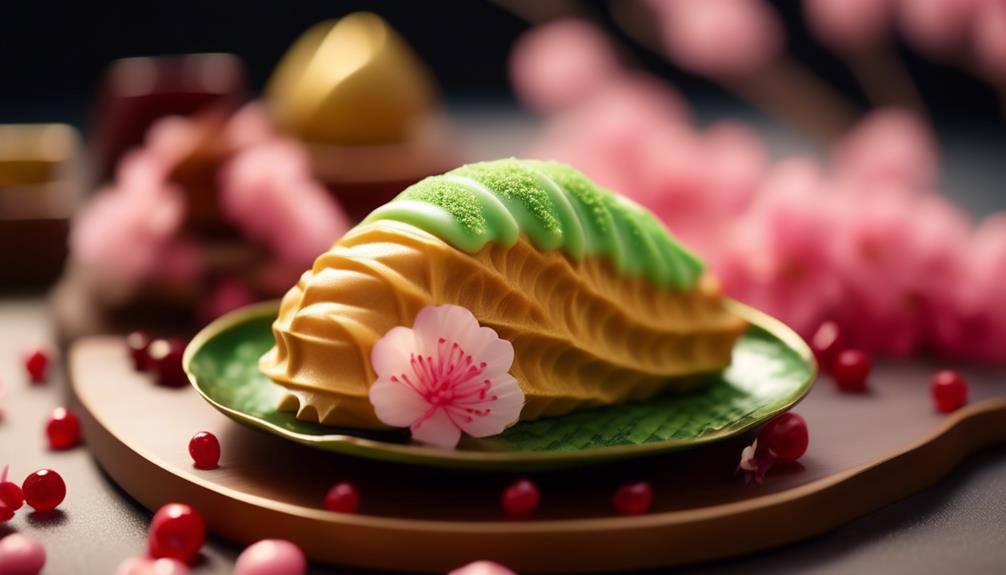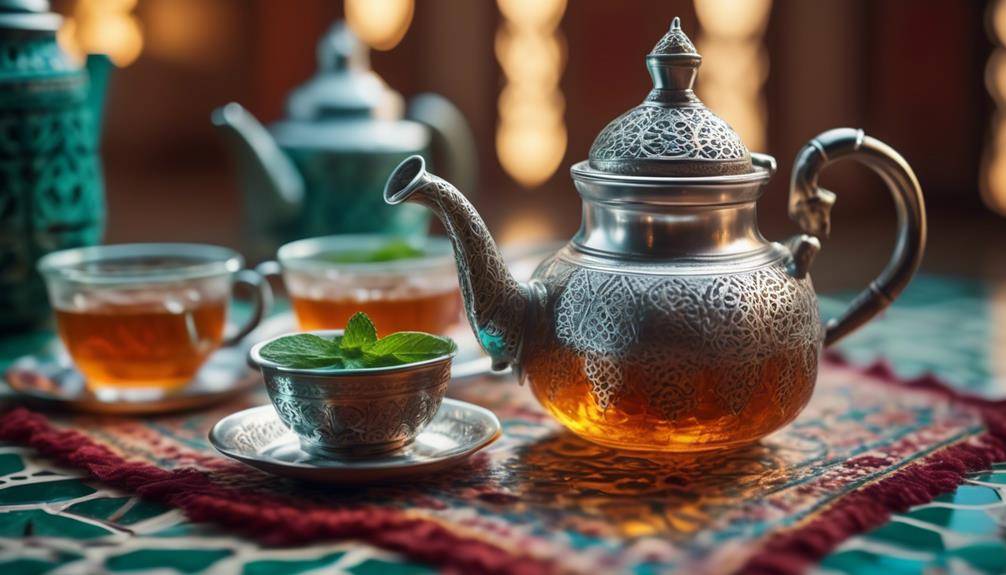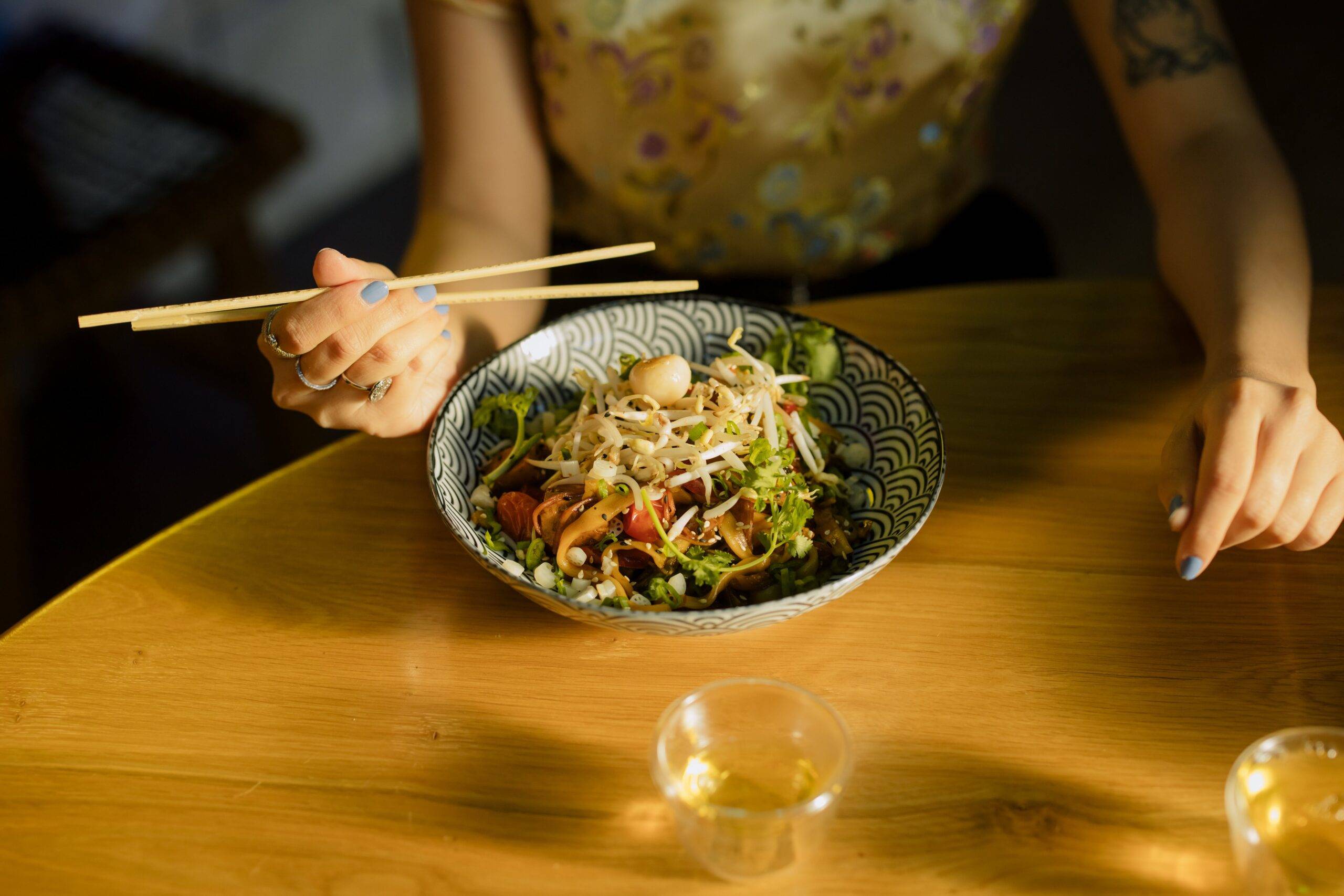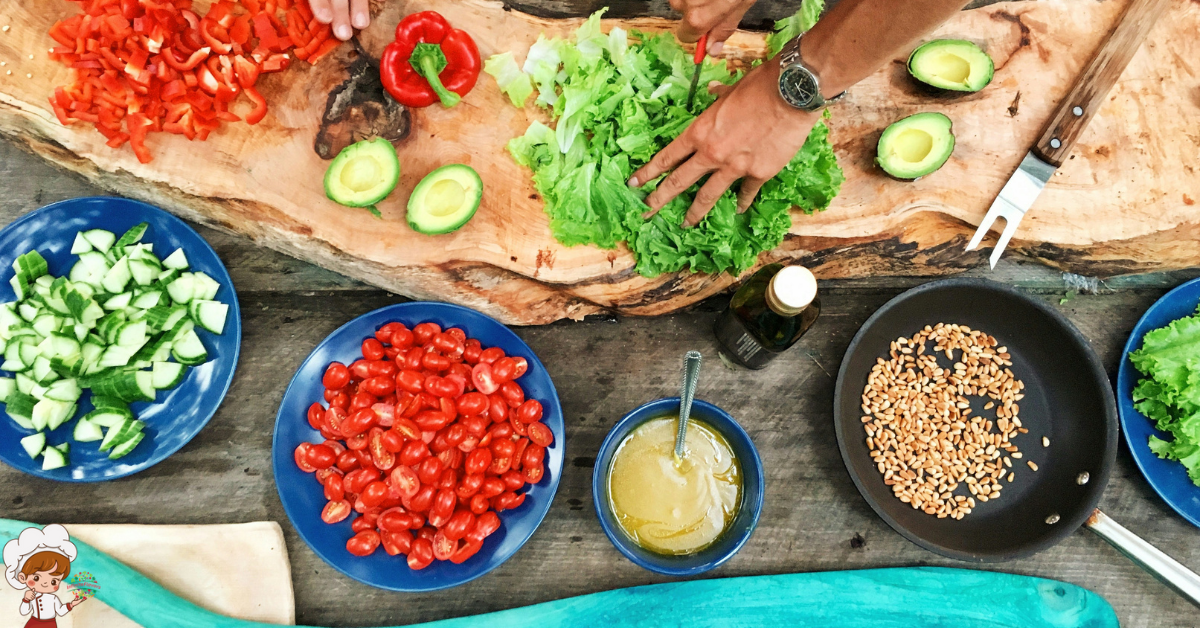How To: Moroccan Cooking Classes And Workshops
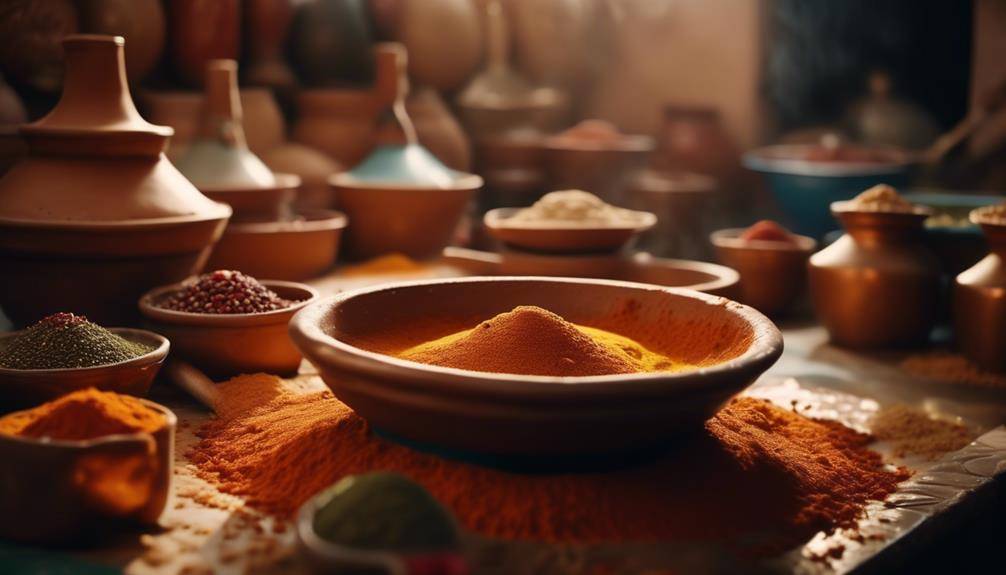
If you’re tired of the same old recipes and want to spice up your culinary skills, look no further than Moroccan Cooking Classes And Workshops. Step into a world where ancient traditions meet modern flavors, and let the aromas transport you to the bustling markets of Marrakech. From mastering the art of making Moroccan bread to unlocking the mysteries of making authentic Moroccan couscous, these classes offer a unique opportunity to immerse yourself in the vibrant flavors and techniques of Moroccan cuisine. So why not embark on a culinary adventure and discover the secrets of Moroccan cooking?
Choosing the Right Moroccan Cooking Class
When selecting a Moroccan cooking class, it is important to consider your level of expertise and culinary goals to ensure an enriching and enjoyable experience. Choosing the right cooking class can make all the difference in mastering bread making techniques and expanding your culinary repertoire.
To start, evaluate your current level of expertise in Moroccan cuisine. Are you a beginner looking to learn the basics or an experienced cook seeking to refine your skills? Understanding your skill level will help you choose a class that suits your needs. Some classes cater to beginners, providing step-by-step instructions and a supportive environment, while others focus on advanced techniques for those who already have a solid foundation.
Next, consider your culinary goals. Do you want to learn traditional Moroccan dishes or explore modern interpretations? Are you interested in mastering a specific aspect of Moroccan cuisine, such as bread making techniques? Different cooking classes offer varying focuses, so it is essential to align your goals with the class you choose. Whether you prefer a hands-on approach or prefer to observe and ask questions, ensure that the class format matches your learning style.
Additionally, consider the reputation and credentials of the instructor. Look for classes taught by experienced chefs or culinary experts who have a deep understanding of Moroccan cuisine. Reading reviews or testimonials from past participants can give you valuable insights into the quality and effectiveness of the class.
Learning Traditional Moroccan Spices and Ingredients
Are you ready to awaken your taste buds and discover the vibrant flavors of Moroccan cuisine? Learning about traditional Moroccan spices and ingredients is an essential part of mastering this rich and diverse culinary tradition. From the warm and earthy notes of cumin and turmeric to the aromatic blend of cinnamon and ginger, these spices will transport you to the bustling markets of Marrakech. And let’s not forget about the unique local ingredients like preserved lemons, saffron, and argan oil that add a touch of authenticity to every dish. Get ready to embark on a flavorful journey as you explore the world of Moroccan spices and ingredients.
Essential Moroccan Spices
Discover the vibrant flavors of Morocco by learning about the essential spices and ingredients used in traditional Moroccan cuisine. Traditional Moroccan spice blends are the heart and soul of Moroccan cooking, adding depth and complexity to dishes. One of the most popular Moroccan spice blends is Ras el Hanout, a fragrant mixture of spices like cumin, coriander, cinnamon, and turmeric. It adds a warm and aromatic flavor to tagines and couscous dishes.
Another essential spice is cumin, which is used in almost every Moroccan recipe. Its earthy and nutty flavor enhances the taste of meats, vegetables, and even bread. Other popular Moroccan spices include ginger, paprika, saffron, and cardamom. Each spice has its own unique flavor profile, making Moroccan cuisine a delightful exploration of tastes and aromas.
Unique Local Ingredients
As you delve into the world of Moroccan cuisine, you’ll uncover a fascinating array of unique local ingredients that are essential to mastering the art of traditional Moroccan spices and ingredients. These ingredients add depth and complexity to Moroccan dishes, creating a culinary experience like no other. One such ingredient is preserved lemons. These lemons are preserved in salt and their tangy, slightly bitter flavor is a key component in many Moroccan dishes, such as tagines and salads.
Another unique ingredient is Ras el Hanout, a fragrant spice blend that typically includes cardamom, cumin, turmeric, and cinnamon. This versatile spice mix adds a rich and aromatic flavor to a variety of dishes. Traditional cooking techniques, such as slow cooking in a tagine and using a mortar and pestle to grind spices, further enhance the flavors of these unique ingredients. By exploring these ingredients and techniques, you’ll be able to create authentic Moroccan dishes that showcase the rich cultural heritage of this vibrant cuisine.
Mastering the Art of Making Moroccan Bread
Ready to become a master of Moroccan bread-making? Get ready to learn the essential bread-making techniques and discover the traditional Moroccan ingredients that make this bread truly unique. From kneading the dough to shaping and baking, you’ll be guided through each step of the process, ensuring that you develop the skills and knowledge needed to create delicious Moroccan bread from scratch.
Bread-Making Techniques
Learn the secrets and techniques behind the art of making traditional Moroccan bread in our immersive bread-making classes and workshops. Our expert instructors will guide you through the process of creating this beloved staple of Moroccan cuisine.
In these classes, you will learn the traditional Moroccan bread-making methods that have been passed down through generations. From kneading the dough to shaping it into the perfect round loaf, you will master the skills necessary to create bread that is soft, fragrant, and full of flavor. Our classes will also cover the important steps of proofing and baking the bread to achieve the desired texture and crust. Join us and become a master of bread-making techniques that have been cherished in Moroccan culture for centuries.
Traditional Moroccan Ingredients
Now that you have mastered the techniques of bread-making in our immersive classes and workshops, it’s time to explore the essential ingredients that make traditional Moroccan bread so special. Traditional Moroccan recipes and popular Moroccan dishes heavily rely on these ingredients to create the distinct flavors and textures that are loved worldwide. One key ingredient is semolina flour, which gives Moroccan bread its unique golden color and slightly coarse texture.
Another essential ingredient is yeast, which helps the bread rise and creates a light and fluffy interior. Salt is also important for flavor, while water is used to bind the ingredients together and create a smooth dough. Finally, olive oil is added to enhance the taste and provide a soft and moist texture. With these ingredients, you’ll be able to recreate the delicious Moroccan bread you’ve learned to make in our classes.
Exploring the Secrets of Moroccan Tagine Cooking
Immerse yourself in the rich flavors and aromatic spices of Moroccan cuisine as you delve into the secrets of Moroccan tagine cooking. Moroccan tagines are a staple in Moroccan households, with variations and regional specialties that make each dish unique. To achieve the perfect balance of flavors in Moroccan tagine dishes, here are some tips to keep in mind.
Firstly, it’s important to choose the right ingredients. Traditional Moroccan tagines often include a combination of meat, such as lamb or chicken, and a variety of vegetables and fruits. Each ingredient contributes to the overall flavor profile of the dish, so make sure to select fresh and high-quality ingredients.
Next, the spices play a crucial role in Moroccan tagine cooking. The combination of spices, such as cumin, coriander, turmeric, and cinnamon, creates the distinct and aromatic flavors that are characteristic of Moroccan cuisine. Use a blend of spices that suits your taste and experiment with different proportions to find the perfect balance.
Another important tip is to take your time when cooking a Moroccan tagine. The slow and gentle cooking process allows the flavors to meld together and creates a rich and flavorful dish. Make sure to simmer the tagine on low heat for a longer period to allow the meat to become tender and the flavors to develop fully.
Lastly, don’t be afraid to add a touch of sweetness to your tagine. Moroccan cuisine often combines savory and sweet flavors, and adding a hint of sweetness, such as dried fruits or honey, can elevate the dish to another level.
Unlocking the Mysteries of Making Authentic Moroccan Couscous
Are you ready to uncover the secrets of making authentic Moroccan couscous? Get ready to learn the art of couscous preparation techniques, discover the traditional Moroccan ingredients that make this dish unique, and explore the bold flavors and spices that bring it to life. From the delicate texture of the couscous grains to the aromatic blend of seasonings, unlocking the mysteries of Moroccan couscous will transport your taste buds to the vibrant streets of Morocco.
Couscous Preparation Techniques
Discover the secrets behind creating authentic Moroccan couscous as you delve into the art of couscous preparation techniques. Couscous is a staple in Moroccan cuisine, and mastering its preparation is essential for any aspiring chef. To start, gather the necessary ingredients, including couscous grains, water, and salt. Rinse the grains thoroughly to remove any impurities, then steam them in a couscousiere or a steamer for about 30 minutes. Fluff the couscous with a fork to separate the grains and release their aromatic flavors.
Next, experiment with different couscous recipes, such as vegetable couscous or lamb couscous, to add variety to your dishes. Explore various couscous cooking methods, such as boiling, steaming, or even baking, to achieve different textures and flavors. With practice and patience, you’ll soon master the art of preparing authentic Moroccan couscous.
Traditional Moroccan Ingredients
Now let’s uncover the key to unlocking the mysteries of making authentic Moroccan couscous by exploring the traditional ingredients that lend this dish its unique flavors and textures. Traditional Moroccan couscous is made with a combination of staple ingredients that reflect the rich culinary heritage of the country.
The star of the dish is semolina, which is a coarse flour made from durum wheat. This gives the couscous its distinct grainy texture. Other key ingredients include vegetables like carrots, onions, and tomatoes, which add freshness and color to the dish. Spices such as cumin, coriander, and turmeric are used to infuse the couscous with a fragrant, aromatic flavor.
Additionally, traditional Moroccan desserts often feature ingredients like almonds, honey, and dates. When it comes to cooking, Moroccan utensils like the tagine, a cone-shaped clay pot, and the couscoussier, a steamer pot, are essential for achieving the authentic flavors of Moroccan cuisine. With these traditional ingredients and utensils, you can recreate the magic of Moroccan couscous in your own kitchen.
Flavors and Spices Used
To unlock the mysteries of making authentic Moroccan couscous, explore the tantalizing flavors and aromatic spices that give this dish its irresistible allure. Moroccan cuisine is known for its exotic flavor profiles and the skillful use of spices. Here are four essential spices commonly used in Moroccan cooking:
- Cumin: This earthy spice adds a warm, nutty flavor to couscous and other Moroccan dishes. It is often used in combination with other spices to create a rich and complex taste.
- Ginger: The zesty, citrusy notes of ginger lend a refreshing kick to Moroccan couscous. It also adds a subtle heat and depth of flavor.
- Turmeric: This vibrant yellow spice not only gives couscous a beautiful golden hue but also imparts a mild, peppery taste. Turmeric is known for its health benefits and is often used in Moroccan cooking for its anti-inflammatory properties.
- Cinnamon: The warm and sweet aroma of cinnamon is a signature flavor in Moroccan cuisine. A pinch of cinnamon can elevate the flavors of couscous, adding a hint of sweetness and warmth.
When cooking Moroccan couscous, these spices are typically ground and combined with other ingredients to create a flavorful spice blend. The spices are then used to season the couscous during cooking, infusing it with their rich flavors. Incorporating these cooking techniques and spices into your couscous recipe will transport you to the vibrant and aromatic world of Moroccan cuisine.
Creating Flavorful Moroccan Appetizers and Starters
Indulge in the vibrant flavors of Moroccan cuisine by mastering the art of crafting delectable appetizers and starters. Moroccan appetizer recipes and starter dishes are known for their bold flavors and unique combinations of spices. These small bites set the stage for a Moroccan feast, tantalizing your taste buds and preparing you for the main course.
One popular Moroccan appetizer is the Briouat, a savory pastry filled with a variety of ingredients such as spiced ground meat, vegetables, or cheese. The pastry is then folded into a triangle or cigar shape and fried until golden and crispy. The combination of the flaky pastry and flavorful filling makes for a mouthwatering treat.
Another favorite Moroccan starter dish is the Zaalouk, a smoky and tangy eggplant dip. The eggplant is roasted until tender and then mashed with garlic, tomatoes, and a blend of spices including cumin, paprika, and coriander. The result is a rich and creamy dip that is often enjoyed with warm crusty bread or as a side dish.
For those who prefer seafood, the Moroccan Shrimp Skewers are a must-try. Marinated in a mixture of garlic, lemon juice, and a medley of spices, the shrimp are then threaded onto skewers and grilled to perfection. These succulent and flavorful shrimp make for an impressive and delicious starter.
Perfecting the Art of Moroccan Pastries and Desserts
Master the art of creating exquisite Moroccan pastries and desserts, and indulge in a world of sweet and decadent flavors. With Moroccan cooking classes and workshops, you can learn the traditional dessert recipes and Moroccan pastry techniques that have been passed down through generations. Here are four things you can expect to explore and perfect in these classes:
- Phyllo Dough: Discover the secrets of working with delicate phyllo dough, a staple in Moroccan pastries. Learn how to roll it out thinly and layer it with various fillings like nuts, honey, and spices. From baklava to b’stilla, you’ll create desserts that are both visually stunning and incredibly delicious.
- Fruit Preserves: Experience the art of making Moroccan fruit preserves, such as quince and apricot. Learn how to cook the fruits with sugar and spices to achieve the perfect consistency and flavor. These preserves can be used as delicious fillings for pastries or as accompaniments to other desserts.
- Almond-based Treats: Explore the world of Moroccan almond-based desserts, like almond cookies and pastries. Discover the techniques for grinding almonds into a fine powder and blending them with ingredients like sugar, eggs, and orange blossom water. These treats are delicate, melt-in-your-mouth delights that showcase the richness of almonds.
- Floral Infusions: Delve into the use of floral infusions in Moroccan desserts. Learn how to infuse pastries with flavors like rosewater, orange blossom water, and lavender. These floral notes add a unique and aromatic touch to the desserts, elevating them to a whole new level of sensory delight.
Discovering the Delights of Moroccan Tea and Beverage Making
As you continue your culinary journey through Moroccan cuisine, prepare to immerse yourself in the art of creating delightful Moroccan teas and beverages. Moroccan tea ceremonies are an integral part of Moroccan culture and hospitality, and learning to prepare these traditional beverages will add a touch of authenticity to your Moroccan cooking experience.
Moroccan tea ceremonies are a time-honored tradition that involves the preparation and serving of hot, fragrant tea. The most popular type of Moroccan tea is the mint tea, also known as “Moroccan whiskey.” To make this refreshing beverage, you will need green tea leaves, fresh mint leaves, sugar, and boiling water. The tea is brewed in a teapot, and then poured into small, delicate glasses from a height to create a frothy layer on top. The tea is then served with a sprig of fresh mint and enjoyed slowly, savoring each sip.
In addition to tea, Moroccan cuisine offers a variety of other delightful beverages. One such beverage is the “Moroccan spiced coffee,” which is made by infusing coffee with spices like cinnamon, cardamom, and nutmeg. This aromatic coffee is often served after meals and is a perfect way to end a Moroccan feast.
If you’re looking for a non-alcoholic option, try the traditional “Moroccan lemonade.” This tangy beverage is made by combining freshly squeezed lemons, sugar, and water. It is a refreshing and thirst-quenching drink, especially in the hot Moroccan summers.
Participating in Moroccan tea ceremonies and learning to make these traditional beverages will not only enhance your culinary skills but also give you a deeper appreciation for Moroccan culture and hospitality. So, get ready to brew a pot of fragrant tea or whip up a refreshing beverage and indulge in the delightful flavors of Moroccan cuisine.
Enhancing Your Skills in Moroccan Salad Preparation
To elevate your culinary repertoire, delve into the art of preparing exquisite Moroccan salads. Moroccan cuisine is known for its vibrant flavors and colorful presentation, and mastering the art of Moroccan salad preparation will add a touch of elegance to your meals. Here are four essential tips to enhance your skills in creating mouthwatering Moroccan salads:
- Moroccan Salad Presentation: The visual appeal of a dish is just as important as its taste. When presenting your Moroccan salad, aim for a visually appealing arrangement of ingredients. Consider using a large platter or a colorful bowl to showcase the vibrant colors of the salad. Arrange the vegetables and herbs in an aesthetically pleasing manner, creating a feast for the eyes before even taking a bite.
- Moroccan Salad Garnishes: Garnishes add an extra burst of flavor and visual interest to your salad. Traditional Moroccan salad garnishes include olives, preserved lemons, fresh herbs like cilantro and parsley, and a drizzle of argan oil. These garnishes not only enhance the taste but also lend authenticity to your Moroccan salad.
- Texture is Key: Moroccan salads are all about the balance of flavors and textures. Incorporate a variety of textures into your salad by including ingredients like crispy cucumbers, juicy tomatoes, crunchy bell peppers, and tender chickpeas. This combination of textures will make your salad more enjoyable to eat.
- Experiment with Spices: Moroccan cuisine is renowned for its rich and aromatic spices. Add depth of flavor to your salad by incorporating spices like cumin, paprika, coriander, and cinnamon. These spices will infuse your salad with a subtle warmth and complexity that is characteristic of Moroccan cuisine.
Diving Into the World of Moroccan Seafood Dishes
Now, let’s immerse ourselves in the captivating world of Moroccan seafood dishes, where the flavors of the ocean come together with the vibrant spices and culinary traditions of Morocco. Discover the art of creating mouthwatering Moroccan seafood recipes and learn the unique cooking techniques that make these dishes so extraordinary.
Morocco, with its long coastline along the Atlantic Ocean and the Mediterranean Sea, is blessed with an abundance of fresh seafood. From succulent grilled fish to aromatic seafood tagines, there is no shortage of delicious options to explore. One popular Moroccan seafood recipe is the Chermoula grilled fish. This dish features a blend of herbs, spices, and tangy lemon juice, creating a delightful marinade that infuses the fish with vibrant flavors. The fish is then grilled to perfection, resulting in a smoky and tender dish that is sure to impress.
Another iconic Moroccan seafood recipe is the seafood tagine. This slow-cooked dish combines a medley of seafood, such as shrimp, clams, and fish, with a rich tomato sauce and an array of aromatic spices like cumin, paprika, and saffron. The tagine’s unique cooking technique allows the flavors to meld together, creating a harmonious and flavorful dish.
When it comes to Moroccan seafood cooking techniques, preserving the natural flavors of the seafood is key. Whether it’s grilling, baking, or simmering in a tagine, the goal is to enhance the taste of the seafood without overpowering it. Moroccan cuisine also incorporates a variety of herbs and spices, such as parsley, cilantro, and cumin, to add depth and complexity to the dishes.
Exploring Vegetarian and Vegan Moroccan Cuisine
Embark on a culinary journey through the diverse and flavorful world of vegetarian and vegan Moroccan cuisine. Discover the richness of Moroccan flavors combined with the freshness and wholesomeness of plant-based ingredients. From fragrant tagines to hearty soups, here are four must-try vegetarian Moroccan dishes and vegan Moroccan recipes that will tantalize your taste buds:
- Vegetable Tagine: This classic Moroccan dish is a medley of seasonal vegetables slow-cooked in a spiced tomato-based sauce. The flavors meld together beautifully, resulting in a hearty and satisfying meal. The tagine is traditionally served with couscous or crusty bread, making it a perfect choice for a comforting dinner.
- Moroccan Lentil Soup: Bursting with warm spices and earthy flavors, this hearty soup is a staple in Moroccan cuisine. Made with lentils, vegetables, and fragrant spices like cumin and paprika, it is a nutritious and filling option for vegetarians and vegans alike. Serve it with a side of crusty bread for a complete meal.
- Carrot and Chickpea Salad: This refreshing salad combines the sweetness of carrots with the nuttiness of chickpeas, all tossed in a vibrant lemon-garlic dressing. Packed with protein and fiber, it is a light yet satisfying dish that can be enjoyed as a side or a main course.
- Moroccan Spiced Quinoa: Quinoa takes center stage in this flavorful dish, cooked with aromatic Moroccan spices like cumin, turmeric, and cinnamon. Topped with roasted vegetables and a drizzle of lemon tahini dressing, it is a wholesome and delicious option for those looking for a protein-packed meal.
Indulge in the vibrant flavors of vegetarian Moroccan dishes and explore the endless possibilities of vegan Moroccan recipes. From traditional tagines to modern twists, Moroccan cuisine offers a variety of plant-based options that will delight any palate. So, grab your apron and get ready to create culinary magic in your kitchen.
Incorporating Moroccan Flavors Into International Dishes
Ready to take your culinary skills to the next level? Discover the art of incorporating Moroccan flavors into international dishes. From the fusion of Moroccan spices with global culinary influences to creating unique flavor profiles, this subtopic will show you how to elevate your cooking to new heights. Get ready to embark on a flavorful journey that will impress your taste buds and those of your dinner guests.
Fusion of Moroccan Spices
To infuse a global twist into your culinary repertoire, explore the art of incorporating Moroccan flavors into international dishes through the fusion of aromatic Moroccan spices. By blending the traditional cooking techniques of Morocco with cuisines from around the world, you can create unique and enticing flavor combinations that will delight your taste buds. Here are four ways to incorporate Moroccan spices into your favorite international dishes:
- Moroccan-inspired tacos: Season your meat or vegetables with a blend of cumin, coriander, paprika, and cinnamon, then serve them in warm tortillas with a tangy yogurt sauce and fresh herbs.
- Mediterranean-style pasta: Add a pinch of Ras el Hanout, a popular Moroccan spice blend, to your tomato sauce for a fragrant twist on classic pasta dishes like spaghetti or lasagna.
- Spiced Indian curry: Enhance the flavors of your favorite Indian curry by incorporating Moroccan spices such as turmeric, ginger, and cardamom. The result is a rich and aromatic dish that will transport you to exotic lands.
- Moroccan-infused desserts: Give your sweet treats a Moroccan twist by adding spices like saffron, orange blossom water, or rose water to your cakes, cookies, or puddings. These unique flavors will add depth and complexity to your desserts.
Global Culinary Influences
Immerse yourself in a world of global culinary influences by incorporating the vibrant flavors of Moroccan cuisine into your favorite international dishes. Moroccan cuisine has a rich history of global influence, as it has been shaped by various cultural fusions throughout the centuries. The Moroccan spice trade route connected North Africa to Europe, the Middle East, and beyond, allowing for the exchange of ingredients and culinary techniques. This resulted in a unique blend of flavors that can be easily incorporated into dishes from different cuisines.
You can add a touch of Moroccan spice to your Italian pasta by infusing it with Ras el Hanout, a complex blend of spices that includes cumin, coriander, and cinnamon. Or, you can enhance your Mexican tacos with a Moroccan twist by using harissa, a fiery chili paste that adds a depth of flavor and heat. The possibilities are endless when it comes to incorporating Moroccan flavors into your favorite international dishes, allowing you to experience a true culinary journey that celebrates the global influences of Moroccan cuisine.
Understanding the Health Benefits of Moroccan Cooking
Discover the myriad of health benefits that come with indulging in the flavors and techniques of Moroccan cooking. Moroccan cuisine is known for its rich and aromatic dishes that are not only delicious but also promote good health. Here are four reasons why incorporating Moroccan cooking into your diet can have a positive impact on your well-being:
- Benefits of using Moroccan spices: Moroccan cuisine is famous for its unique blend of spices, such as cumin, turmeric, ginger, cinnamon, and paprika. These spices not only add depth and flavor to dishes but also offer a range of health benefits. For example, turmeric has anti-inflammatory properties, while cinnamon can help regulate blood sugar levels.
- Traditional Moroccan cooking techniques: Traditional Moroccan cooking techniques, such as slow cooking in a tagine, steaming, and grilling, help to retain the nutritional value of the ingredients. The slow and gentle cooking process preserves vitamins and minerals, resulting in healthier and more nutrient-rich meals.
- Abundance of fresh ingredients: Moroccan cuisine emphasizes the use of fresh and seasonal ingredients, such as vegetables, fruits, legumes, and lean proteins. These ingredients are packed with essential nutrients, vitamins, and antioxidants, which are beneficial for overall health and well-being.
- Balanced and wholesome meals: Moroccan cuisine is known for its balanced and wholesome meals. The combination of grains, vegetables, proteins, and spices creates a well-rounded and nutritious diet. This balanced approach can help maintain a healthy weight, improve digestion, and provide sustained energy throughout the day.
Incorporating Moroccan Cooking Techniques Into Your Daily Routine
Incorporate the flavorful and healthy techniques of Moroccan cooking into your daily routine for a culinary adventure that nourishes both your body and soul. Moroccan cuisine is known for its vibrant flavors, aromatic spices, and unique cooking methods. By incorporating these techniques into your daily meal planning, you can elevate your dishes and create a truly unforgettable dining experience.
One key technique in Moroccan cooking is the use of spices. The combination of spices like cumin, coriander, turmeric, and cinnamon adds depth and complexity to your dishes. Experiment with these spices in your everyday cooking to infuse your meals with a touch of Moroccan flair.
Another technique to embrace is slow cooking. In Moroccan cuisine, many dishes are cooked slowly over low heat, allowing the flavors to develop and meld together. Take the time to simmer stews, tagines, or even roasted vegetables on a low flame, and you’ll be rewarded with a rich and flavorful dish.
Moroccan cooking also emphasizes the use of fresh ingredients, such as herbs, vegetables, and fruits. Incorporate more of these wholesome ingredients into your daily meals for added nutrition and flavor. Consider adding fresh mint to your salads, or using preserved lemons to brighten up your dishes.
Additionally, Moroccan cooking often includes a variety of textures. From crispy phyllo dough to tender braised meats, the contrast in textures adds interest and excitement to your meals. Experiment with different cooking techniques to achieve a balance of textures in your dishes.
Incorporating Moroccan cooking techniques into your daily routine not only adds variety and excitement to your meals but also promotes a healthier lifestyle. So, why not embark on this culinary adventure and let Moroccan flavors transport you to a world of taste sensations?
Hosting a Moroccan-inspired Dinner Party at Home
Now that you have mastered the art of incorporating Moroccan cooking techniques into your daily routine, it’s time to take your culinary skills to the next level by hosting a Moroccan-inspired dinner party at home. Impress your guests with the exotic flavors and vibrant colors of Moroccan cuisine. Here are some hosting tips and menu planning ideas to help you create a memorable evening:
- Create an inviting atmosphere: Set the mood with Moroccan-inspired decor such as colorful lanterns, patterned tablecloths, and floor cushions for a cozy seating area. Play traditional Moroccan music in the background to transport your guests to the bustling streets of Marrakech.
- Plan a diverse menu: Moroccan cuisine is known for its variety of flavors and textures. Start with a selection of Moroccan salads, such as zaalouk (roasted eggplant dip) and taktouka (spicy tomato and pepper salad). For the main course, consider serving a tagine, a slow-cooked stew of meat or vegetables, accompanied by fluffy couscous. Finish with a sweet treat like baklava or mint tea.
- Offer vegetarian and gluten-free options: Moroccan cuisine offers plenty of options for guests with dietary restrictions. Include vegetarian tagine options with chickpeas or lentils, and consider using gluten-free grains like quinoa in your couscous dish.
- Encourage interaction: Moroccan dining is a communal experience. Arrange your table in a way that encourages conversation and sharing. Serve the main dish in a large tagine at the center of the table, allowing guests to help themselves and pass the dishes around.
Moroccan Cooking Classes And Workshops; Frequently Asked Questions
What Are Some Common Health Benefits of Moroccan Cooking?
You’ll discover common health benefits when you explore Moroccan cooking. Traditional cooking techniques like slow simmering and the use of aromatic spices can enhance digestion, boost immunity, and promote overall well-being.
How Can I Incorporate Moroccan Cooking Techniques Into My Daily Routine?
To add Moroccan flavors to your everyday meals, try incorporating traditional spices like cumin, cinnamon, and paprika. Experiment with quick and easy Moroccan-inspired recipes, such as couscous salad or lamb tagine, for a taste of Morocco in your daily routine.
What Are Some Tips for Hosting a Moroccan-Inspired Dinner Party at Home?
To host a Moroccan-inspired dinner party at home, start by creating an inviting atmosphere with Moroccan-inspired decor. Set the table with vibrant colors and patterns, and incorporate traditional elements like lanterns and tapestries. Serve authentic Moroccan dishes and encourage guests to embrace the immersive experience.
Are There Any Vegetarian or Vegan Options Available in Moroccan Cuisine?
If you’re looking for vegetarian or vegan options in Moroccan cuisine, you’re in luck! Moroccan dishes like vegetable tagine, couscous with vegetables, and lentil soup are delicious and satisfying choices for plant-based eaters.
Can I Learn How to Make Moroccan Pastries and Desserts in These Cooking Classes?
Yes, you can learn how to make Moroccan pastries and desserts in these cooking classes. They will teach you traditional Moroccan dessert techniques and provide you with moroccan pastry recipes to try at home.
Conclusion
In conclusion, Moroccan cooking classes and workshops offer a unique opportunity to learn the art of Moroccan cuisine. From mastering traditional spices and ingredients to exploring the secrets of tagine cooking and making authentic couscous, these classes provide a hands-on experience that will expand your culinary skills. By incorporating Moroccan flavors into international dishes and understanding the health benefits of this cuisine, you can elevate your cooking and impress your guests. So why not host a Moroccan-inspired dinner party at home and share the delights of Moroccan cuisine with your loved ones?




